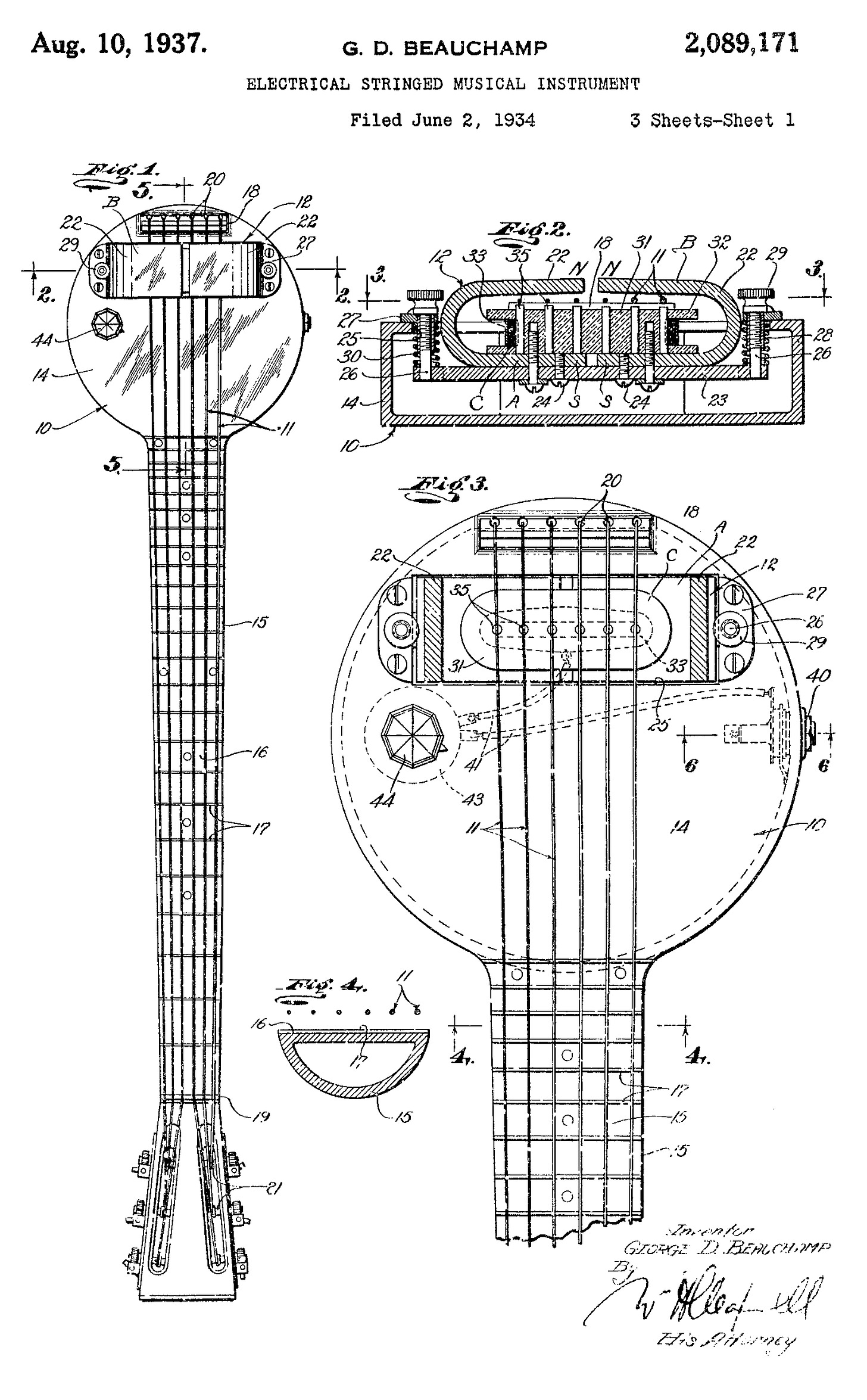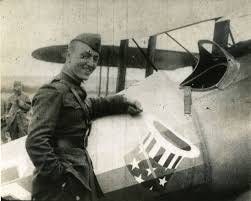Key Rickenbacker guys in the beginning
-
Adolph Rickenbacker, Swiss immigrant and electrical engineer
-
George Beauchamp, vaudeville performer and multi-instrumentalist and a founder of the National String Instrument Corporation (original builder of resonator guitars)
-
Paul Barth, factory superintendent at National String Instrument Corporation
-
Harry Watson, also a factory superintendent at National
Beauchamp and Barth have a significant claim to fame building the first solid-body electric guitar in 1931, “Frying Pan”. (PAF in 1934, approved in 1937)
They met working together at National in the late 1920s from which they were both fired after National ran into a litany of issues (even though Beauchamp was a founder). Beauchamp recruited Barth to work on his guitar concept (and electronics) and they eventually reached out to another co-worker at National, Harry Watson. Watson was the woodworker and built the body and neck of the Frying Pan.
Adolph Rickenbacker entered the equation once the Frying Pan prototype was functional. He had a relationship with the other guys because his company, Rickenbacker Manufacturing, built the metal bodies for National’s resonator guitars.
Rickenbacker was called on to help produce the new electric guitar and the guys formed the Ro-Pat-In Company in 1932. That name didn’t last long and it was changed to Electro String Company.
They landed on “Rickenbacker” for the name of their instruments, likely for two reasons. Adolph had the capital and manufacturing capabilities. And his cousin Eddie popularized the “Rickenbacker” name across America as he was a huge WWI war hero and famous race car driver.
Despite what the guys at Electro had accomplished, their main gig in the 1930s was making lap steels and amplifiers.
Modern Rickenbacker guitars as we now know them didn’t happen until Francis C. Hall bought the company in 1953.
Hall’s interest in the guitar business began seven years earlier when his company, Radio-Tel, became the first distributor of the newly formed Fender Electric Instruments Company with Hall being an equity partner in Fender. Depending on the source, that marriage didn’t end gracefully, but either way Hall sold his Fender shares to Leo.
Hall quickly got away from steels to focus on electric guitars as he correctly believed amplified guitars were the future of the business.
The first two guitars were the Rickenbacker Combo 600 and 800 in 1954 with the design input coming from Paul Barth and Roger Rossmeisl (later of Fender fame). Semie Moseley, later to be the founder of Mosrite Guitars, was also working at Rickenbacker at the time. The main difference between the two guitars were the pickups, a single coil for the 600 and a dual coil for the 800. When the dual coils were used in tandem they were humbucking. That was three years before Gibson first used a humbucker on the ES-175 in 1957.
Combo 800 specs: Birch Body, Maple Neck, Rosewood fretboard, Rickenbacker Multiple Unit dual coil horseshoe pickup, Single rotary volume and tone control, Two switches, one for each coil
The horseshoe pickups were a carryover from Rickenbacker’s previous electric’s, including all the way back to the original Frying Pan. Since they were sitting around the stockroom in bulk they were put to use on the Combo 600 and 800.




